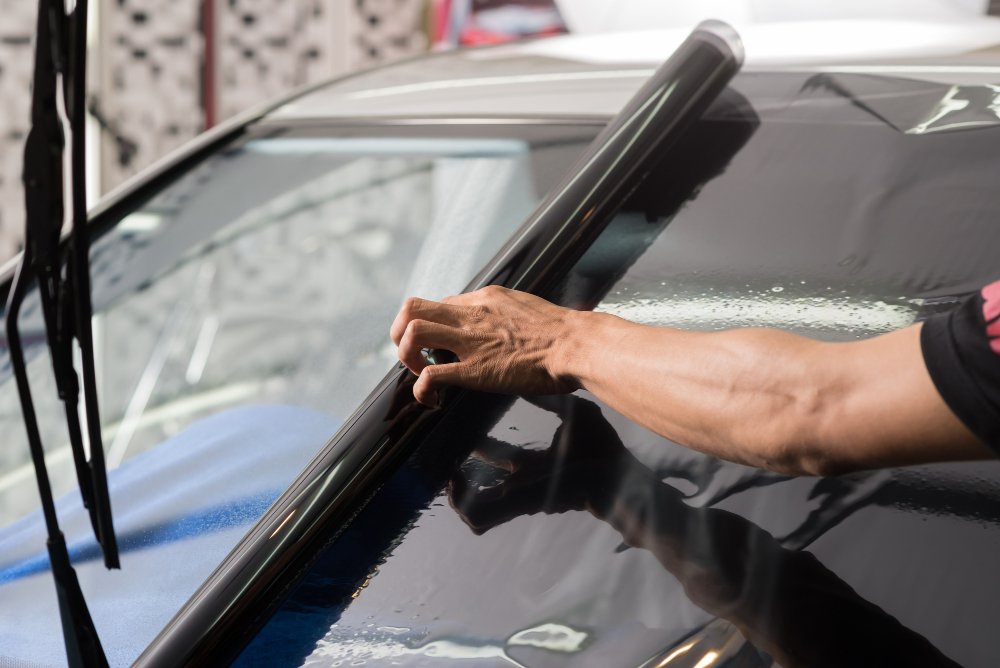Tennessee Tint Laws: Your Go-To Guide For Compliance
Driving in Tennessee with tinted windows offers many benefits, including privacy, interior protection and reduced glare. However, it's crucial to understand the state's legal guidelines to avoid penalties. And if you're considering elevating your car's protection and aesthetic appeal, auto window tinting can be an excellent add-on. Read on to get the complete rundown of what you should know.
Breaking Down VLT In The Eyes Of Tennessee Law
In the field of window tinting, VLT or Visible Light Transmission is a term you're likely to hear quite often. This figure, denoted as a percentage, is set by Tennessee state rules to specify how much light should be allowed through a vehicle's windows. A lower percentage means your windows will be darker, while a higher percentage leads to lighter window tints. Getting to grips with VLT is crucial, as this is what will help you determine if your tint complies with Tennessee's regulations. These guidelines aim to balance individual privacy needs with the universal need for safe driving conditions.
The Spectrum Of Legal Auto Window Tinting In Tennessee
Picking the right shade of window tint is more than a fashion statement; it's a legal requirement. Each type of window has a different VLT percentage that's considered legal, so you need to be well-versed in what's allowed and what's not. Failure to comply could lead to penalties and even forced removal of your window tint. Being informed is your first line of defense against unwittingly breaking the law.
Specifics For Passenger Cars And Station Wagons
Windshield Regulations
The windshield may be tinted for passenger cars and station wagons, but only above the manufacturer's AS-1 line. Alternatively, you can have tinting extending to five inches from the top of the windshield. The goal here is to maintain visibility for the driver without compromising on safety.
Front Side Windows Standards
The front side windows should have a VLT of more than 35%. It ensures that the driver has a clear line of sight and is visible to other motorists and law enforcement officers.
Back Side Windows Norms
When it comes to the back side windows, Tennessee allows any level of darkness, with one caveat—you must have dual side mirrors. These mirrors serve as an additional safety measure, ensuring that you have good rear visibility.
Rear Window Parameters
If your vehicle has dual side mirrors, you have a bit more flexibility with the rear window. The law requires a VLT of more than 35% to ensure you can still see clearly behind you while driving.
Tinting Guidelines For Multi-Purpose And Recreational Vehicles
Windshield Tint Clarifications
The rules for the windshields of multi-purpose and recreational vehicles are much the same as those for passenger cars—only above the AS-1 line is tinting permitted.
Rules for Front-Side Windows
Just like in passenger cars, the front side windows in multi-purpose vehicles should allow over 35% of light to pass through. The aim remains the same: ensuring good visibility for safer driving.
Norms for Back Side Windows
Here, any level of tint darkness is also allowed for the back side windows, provided the vehicle has dual side mirrors to enhance visibility.
Rear Window Tint Levels
In multi-purpose vehicles, the law mandates a minimum VLT of 35% for the rear windows, conditional upon the presence of dual side mirrors.
Reflective Tints – What Tennessee Says
Sedan Tint Reflectiveness Guidelines
In Tennessee, reflective or metallic window tints are prohibited for sedans. This ban aims to minimize glare and distractions for other drivers, thereby enhancing road safety. The state deems the reflective characteristics of these tints as potential hazards.
SUV and Van Reflective Tint Rules
The regulations for SUVs and vans align with those for sedans—metallic and mirrored tints are not allowed. The rationale is the same: to reduce glare and increase safety. Given the larger size of SUVs and vans, the risk of causing vision impairment to other drivers is considered too high to permit such tints.
Complementary Tennessee Tint Rules
Side Mirror Requirements
Tennessee law stipulates that you must have dual side mirrors if your vehicle's back window is tinted. This is to augment visibility, particularly in situations where the rear window tint is on the darker side.
Sticker Protocols
You must place a sticker between the film and the glass on the driver's side window. This sticker serves as proof that your tinting is compliant with state law.
Prohibited Colors
The state outlaws the use of red, amber and yellow tints, as these colors could be misleading and potentially dangerous to other drivers.
Tint Certification
Manufacturers must certify that their tint film meets Tennessee's VLT requirements. This certification serves as an assurance for consumers that they are installing a legally compliant product.
Penalty Framework
Non-compliance with Tennessee's tint laws is classified as a Class C misdemeanor, subject to a fine of up to $50.
Medical Exemptions
For those with medical conditions that necessitate darker tints, Tennessee offers medical exemptions. However, these require documentation and certification from a licensed physician.
Applying auto window tinting to your vehicle can be the cherry on top, giving your car that extra flair while adhering to the state's tint laws. With this comprehensive understanding of Tennessee's window tint laws, you can enjoy both the aesthetic and functional benefits of tinting without running afoul of the law.
Ready To Transform Your Ride?
Rev up your vehicle's style and safety with ProTint Window Tinting. From top-notch coating to legal auto window tinting in Murfreesboro, TN, we've got your automotive needs covered. Don't just drive—cruise in comfort and confidence. Contact us today for an appointment!

